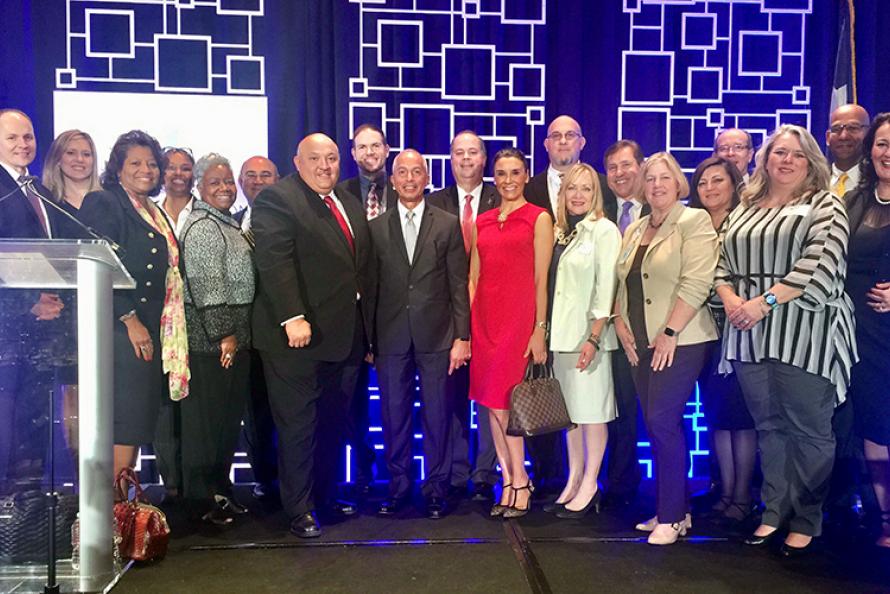While the Houston Airport System weathered the storm — literally, like all of Houston affected by the storms and flooding produced by Hurricane Harvey — there were as many shining moments to celebrate when Houston Aviation Director Mario C. Diaz delivered the annual State of the Airports address Friday, Nov. 17, before a crowd of more than 400 at the Royal Sonesta Hotel.
At the annual event, sponsored by the Greater Houston Partnership, Diaz noted both the preparation and the response to the historic flooding in August 2017, recognizing both the airport staff and airline partners for their parts in the aid and recovery efforts throughout Houston, and in managing to get all three airports back up and operating in just a matter of days.
“With 50 inches of rain falling on some areas of Houston, our airport system again, proved its worth, Diaz said. “Our infrastructure withstood the deluge.” Diaz chronicled the efforts of the system to support Houstonians during the storm.
But, as much as the impacts of Harvey dominated headlines in 2017, Diaz noted that the airports had more than its fair share of moments in the sun; for example, successfully navigating the influx of sports fans who came to Houston for the NFL’s Super Bowl LI and Major League Baseball’s playoffs, including a celebration of the returning World Series champion Houston Astros.
In 2017, the airports also celebrated growth in variety of ways, Diaz said, including the completion of an ambitious concessions expansion plan that saw more than “40 new retail shops and 30 restaurants constructed or renovated offering a variety of global flavors and more healthful choices.”
The airport director discussed plans for redevelopment of Terminal D, the Mickey Leland International terminal.
“This modern facility will accommodate 12 gates and 20 airplanes with the capacity to accommodate the wide-body A380, capable of long-haul travel to the farthest reaches of our route map,” Diaz said of the project, which he said is targeted to be completed by 2021.
Diaz also noted the growth at Hobby Airport, which began with the opening of the international concourse in October 2015, and is already paying dividends. More than 800,000 new international passengers annually take advantage of the growing connections with Mexico, Latin America and the Caribbean, Diaz said, and that helped place Hobby Airport — which celebrated its 90th anniversary in 2017 — in the Top 10 of the J.D. Power rankings for passenger satisfaction.
Ellington Airport and the Houston Spaceport project reached significant milestones in 2017, with Ellington first breaking ground for the construction of a new air traffic control tower that will both serve its general aviation and military partners, as well as provide new technology for operations by Reusable Launch Vehicles. All of this before Ellington celebrated its 100th anniversary, and along with the beginning of a $12.4 million project to provide important infrastructure improvements.
Technology played a key role in the airports’ efforts to not only meet, but exceed the expectations of the traveling public. The airports pioneered wayfinding technology, with turn-by-turn directions available on the mobile friendly fly2houston.com website, as well as a “Smart Restroom” program that utilizes iPads to provide information that will help with staffing and maintaining the facilities.
“Next generation technology and the utilization of big data is an important part of the effort to provide better passenger service,” Diaz said.
With a strong financial projection — in FY2017, the total net position for the airport system increased to about $1.48 billion, thanks to operating revenue increases including parking revenue and a decrease in operating expenses — Diaz said Houston’s airports did more than just stay above water in 2017, it continued to elevate the travel experience for Houstonians.
